The Australian Kelpie is the definition of a hard-working dog and the perfect companion for a very active person. This dog is independent and capable of completing everyday tasks while also having plenty of energy to exercise and participate in dog sports.
As part of the herding dog group, Australian Kelpies are used professionally to herd sheep and other livestock but are also suitable for any family home in urban cities. These dogs enjoy being with owners who can provide them with enough exercise and mental stimulation.
Caring for an Australian Kelpie is a big responsibility, but reading this guide will give you an advantage to being the ultimate Australian Kelpie owner. Read on further to learn about this dog's characteristics, personality traits, exercise needs, care requirements, history, and more!
Australian Kelpie Characteristics (Physical)
Australian Kelpies are diligent dogs that are as adorable as they are energetic. The breed is split into two groups, Working Kelpies and Show Kelpies. Working Kelpies are used primarily to herd livestock, and Show Kelpies are bred for appearance and compete in dog sports.
Regardless of what purpose they are adopted for, not all Australian Kelpies are physically the same, so kennel clubs established a breed standard that any potential Kelpie owner or breeder should review. If you want to adopt an Australian Kelpie Dog, here are the physical characteristics to keep a lookout for.

Head
One of this dog's most noticeable features is its long ears. The Australian Kelpie's ears are pricked and have soft pointed tips. The dog's facial expression is reminiscent of a fox.
They have almond-shaped eyes that may be brown or a lighter color depending on their coat. The color of their nose should also match the coat color. The head should always be proportional to their body with a lean muzzle.
Body
Kelpies have a moderately long neck that is strong enough to support their head. Their chest is muscular and deep. The topline of the Kelpie should be firm. Their tail hangs with a slight curve, but the tail raises when they feels excited or are engaging in fun activities.
Limbs
The Australian Kelpies can run around in large open fields with rough terrain thanks to their limbs. Their legs can make sudden turns and help make them among the best herding dogs.
The forelegs of the Australian Kelpie are straight and muscular, just like their shoulders. When viewing this dog from the front, the legs appear parallel. Their back legs are powerful and their front and back paws are well-built and round with well-arched toes.
Australian Kelpie Dog Breed Size
An Australian Kelpie puppy can grow up to 15 to 20 inches at the shoulder when fully mature. Australian Kelpies are not very heavy either. They can weigh between 30 to 46 pounds depending on their diet and exercise they are getting.
They are medium-sized dogs who do not take up too much space when they are resting indoors. Dog owners should take precautions when walking their Australian Kelpie even though this dog is not large enough to pull their owner.
Australian Kelpies' overall size and weight differs between males and females. Dog owners should also be responsible when feeding their Kelpie to help keep them at their ideal weight.
Australian Kelpie Personality
Dogs are considered man's best friends for their loyalty and affection toward people. The Australian Kelpie is no different. They love bonding with their adopted family, but they also have other appealing personality traits that make them highly regarded.
An Australian Kelpie puppy can start off a little mischievous and curious, but as they mature and go through training, their personality will also develop. Australian Kelpies are not just known for their endurance; they also share the following personality traits.

Intelligent
Dog owners and livestock ranches enjoy having an Australian Kelpie because of their intelligence. This dog was bred to work, so they like taking on tasks and completing them to the best of their capabilities. Thanks to their intelligence, the Australian Kelpie dog is easier to train than other canines.
These dogs like staying occupied, so they require plenty of mental stimulation. Dog puzzles are one way to keep Kelpie's intelligence sharp. Some dog owners even train their Kelpie with fetching and bringing them household items, such as dirty laundry or the morning newspaper.
Alert
Even though they belong to the herding dog group, Australian Kelpies are excellent watchdogs, thanks to their alertness. Although it is common to see Kelpies herding sheep, professional groups also employ this dog breed as search and rescue dogs, detection dogs, and even therapy dogs.
When guarding property, this dog is alert to any unusual sights or sounds. Whether it is a rodent or human, any unwanted intruder will have difficulty staying out of this dog's sight. Kelpies are not afraid of barking loudly to alert their owners of any potential trespassers.
Energetic
Australian Kelpies are high-energy dogs. They were bred to handle a day's worth of work without getting too tired. This dog's high energy levels are suitable for herding animals, joining in on search and rescue operations, or participating in dog sports.
It is important to provide Kelpies with several outlets to expand their energy into. This dog is best suited with an owner who can meet and provide this dog's exercise needs.
Australian Kelpie Dog Breed Exercise
One of the biggest responsibilities of owning an Australian Kelpie dog is meeting their daily exercise needs. Some dogs are fine with going on one or two walks a day, but Australian Kelpies need that and more. On average, you should aim at providing your Kelpie at least 30 to 60 minutes of exercise and mental stimulation for your dog daily.
Here is a list of some activities you can have your Australian Kelpie perform.
- Walks/Runs
- Fetch/Catch
- Frisbee
- Dog Agility competitions
- Obedience Activities
- Flyball
- Tracking or Herding trials
- Dog Puzzles
Training your dog is also another way to provide them with mental stimulation. Dogs who are not being constantly exercised can develop unwanted behavior to relieve themselves of energy and boredom. If you neglect this dog's exercise needs, they might begin to chew up furniture, dig holes all over the yard, or bark excessively.
You've probably noticed that this dog requires lots of exercises. If you are not ready to commit to this dog's active lifestyle, then they might not be the right dog for you. This dog can stay active for bigger-sized families by splitting up their exercise needs with different family members.

Australian Kelpie Training
Dog owners should introduce their Australian Kelpie puppies to training the day they are brought home and continue training their family pet as they become older too. A disciplined dog will cause you and your family less trouble than a rowdy dog who disobeys every command.
Some dog owners would rather train their dogs themselves, while others have the resources to pay for their Kelpie's training. No matter who trains your dog, it is vital to use positive reinforcement training. Dogs, especially highly intelligent dogs like the Australian Kelpie, will not respond well to harsh and intimidating tactics for training.
Have some dog treats available to reward your Kelpie whenever they successfully practice and learn a new skill. Here are three kinds of training you should consider for your Australian Kelpie.
- Socialization: Socialization training is helpful for dog owners with young children and other pets in the household or those who like taking their dogs to social gatherings. Exposing your dog to other people outside of their owners helps them behave better and act friendlier around guests. Puppy training classes are available to help your dog become used to other dogs too.
- Obedience Training: Australian Kelpies are smart enough to understand commands but require a confident owner who is patient to teach them these commands. Start with simple commands like sit or stop. Thanks to this dog's intelligence, they are capable of completing challenging tasks and commands.
- Crate Training: A dog crate can provide a safe place for your Kelpie, and it is also the perfect environment to teach your dog how to potty train. If you want to avoid having your dog urinate and, then teach them to properly communicate when using the restroom. Since dogs do not learn how to be potty trained overnight, puppy pads are available to avoid a potential mess.
Australian Kelpie Dog Breed History
Australian Kelpies originated in Australia due to a need to breed a dog capable of handling the hot Australian heat while herding livestock across large areas of rugged land. In the late 19th century, the country now known as Australia was a British colony used to export many products. The sheep and wool industry was experiencing plenty of business, and companies required a dog that can herd animals without too much supervision.
Dogs referred to as Working Collies were sent over from Britain to crossbreed with other kinds of dogs to eventually breed Australian Kelpie dogs. One of the first mentions of a Kelpie was in 1872 when Jack Gleeson purchased a black and tan Kelpie puppy. He is credited with naming this breed Kelpie after an Irish mythological spirit of the same name.
This dog soon became known as the Australian Kelpie but also adopted local nicknames. Dog owners began to refer to black Kelpies as Barbs, the name of a popular racing horse. Others referred to red and tan Kelpies as red clouds.
This dog's popularity spread thanks to their performances across many different dog trial competitions. Their ability to complete various tasks and adaptability to handle different terrains led to this dog breed being exported to other countries as the decades rolled on.
There are a few breeds hailing from Australia, like the Australian Cattle Dog and Australian Shepherd. Although the American Kennel Club does not officially recognize them, Australian Kelpies became recognized by other organizations such as the Canadian Kennel Club and United Kennel Club.

Common Health Problems Found in the Australian Kelpie
Another big part of owning a dog is being mindful of the potential health issues your Australian Kelpie may experience. This breed is known for being hardy and has a lifespan of 12 to 15 years.
Some health problems occur out of nowhere. Any good Australian Kelpie dog owner can better handle unexpected health issues by understanding some of the dogs' common health concerns.
Here are a few health concerns to become informed about.
- Progressive Retinal Atrophy: Progressive retinal atrophy is when the photoreceptor cells in a dog's retina begin to deteriorate gradually. These cells help a dog see some color and see better in the dark. An Australian Kelpie with this disease eventually becomes blind but can still live a healthy life but relying on their other strong senses.
- Hip Dysplasia: Dysplasia is a medical condition where a dog's hip and socket bones do not properly develop. This affects an Australian Kelpie's ability to perform basic skills like walking and running. Consult with a veterinarian to see what treatments are available for your family pet.
- Cerebellar Abiotrophy: This medical condition is passed down genetically but is hard to detect in puppies since symptoms appear later in a dog's life. Cerebellar Abiotophy is when the cells of a part of the dog's brain deteriorate. This causes a dog to have trouble maintaining balance and coordination.
- Obesity: According to a study, obesity in dogs can lead to serious health problems such as heart disease and joint swelling. Obesity in dogs is common, but it is also easy to prevent and treat. Help keep extra weight off your Australian Kelpie by making sure they are getting plenty of exercise.
The chances of your dog developing any of these health concerns are low. One way to ensure your Australian Kelpie remains healthy throughout their life span is by providing them with the best care possible.
How to Care for an Australian Kelpie
Caring for an Australian Kelpie is pretty straightforward and is a great way to build the bond you share with them. It should not be seen as a chore but as an opportunity to have fun and check in with your pet. The different tasks required for proper dog care can be split up between family members too!
Although you should always seek the best items for your dog, it should not cost you an arm and a leg. There are plenty of affordable and resourceful ways to provide the best care for your dog. Here are some things to consider when providing care for your Kelpie.
- Dog Toys: If you can splash the cash on dog toys, then go for it! You can also get an old tube sock and stuff it with a tennis ball and tie the end. You now created a toy to play tug-o-war with your Kelpie.
- Doghouse: A dog house is a great refuge for your dog to lounge when it wants to sleep or rest. A dog crate is also ideal for housing your dog indoors. It can be used to keep your dog's food and water bowl.
- Playdates: One way to help your dog become more open to other dogs is by setting up playdates with other dog parents. Bring a few toys and treats, and meet at a dog park where your dogs can run around and chase each other.
- Vet Check-ins: Either once or twice a year, plan a visit to your Kelpie's vet for a check-up. This is the perfect time to diagnose any concern you have noticed. The veterinarian can provide insight into your dog's current health as well.

Nutrition and Feeding for an Australian Kelpie
Properly feeding your Australian Kelpie is one of the easier responsibilities, but it is also something to be well informed on. Some first-time dog owners make the mistake of overfeeding their dog or giving them the wrong type of food.
The amount of dog food to feed your Kelpie depends on their size, weight, age, and other nutritional needs they might have. Kelpies are full of energy and constantly moving, so they need food that best supports their active lifestyle.
Always seek food that is made with all-natural ingredients without any traces of harmful byproducts. If you are unsure what food brand is best for your pet, consult with a vet or professional animal nutritionist.
Foods to Share with Australian Kelpies
Australian Kelpies can eat some human food, but it should not make up most of their diet unless directed by a veterinarian. These dogs can enjoy the following food that people eat too.
- Cooked and Unseasoned Meats
- Unsalted and Cooked Eggs
- Cashews
- Plain Bread
- Honey
- Peanut Butter
Dogs can also eat some fruits and vegetables, which make a great alternative to dog treats. Freeze up some banana slices or strawberries on a hot summer day to keep your Kelpie refreshed.
Foods Australian Kelpies Should Avoid
There are some common food items your dog should avoid eating. If they accidentally ingest these foods, they can develop unwanted side effects like upset stomach or vomiting. Here are some food dogs should avoid.
- Chocolate
- Onions
- Garlic
- Avocado
- Alcohol
If your dog accidentally eats any of these foods, contact your local animal hospital. One way to avoid having your pet eat your food is by making sure plates are put away after eating. A trained dog will also bless likely to eat random food off the table.

Coat Color And Grooming
Australian Kelpies have a long and flat double coat with a shorter undercoat. The Kelpie's coat can be rough or smooth and is suited for resisting the rain pretty well too. The coat is seen in the following colors.
- Black
- Chocolate
- Black with Tan Markings
- Fawn
- Blue
- Red
- Red with Markings
- Cream
The coat should be brushed once or twice a week to remove old hair and spread healthy skin oils across the coat. Some Kelpies shed more during warmer temperatures. Hair trims are optional, but your should bath your pup with all-natural dog shampoos that protect their coat and keep it looking clean.
Aside from grooming your Australian Kelpie's coat, it would be best if you dedicated some extra time to do the following things.
- General Hygiene: Check your dog's ears and eyes for any dirt and debris. Gently remove it with a Q-tip. Brush your dog's teeth with a dedicated dog toothbrush tool to ensure they have a healthy mouth.
- Nail Trimming: An overgrown nail can make it hard for your Australian Kelpie to move around. Through training, let your dog become used to getting their nails checked and trimmed once a month. Professional grooming services can help trim your dog's nails as well.
Children And Other Pets
Training and socialization are essential in how well-behaved your dog acts around young children and other pets. Exposing your Kelpie puppy to small children and other pets can help them become more used to being around them. If you adopt a Kelpie, make sure they are taught to be around other guests and family members.
The Australian Kelpie has an instinct to herd animals, and people too! Please make sure the puppy you adopt is going to a good home, has been exposed to other animals, or adapted to a family with children.
Puppy kindergarten classes are a great way to introduce your dog to other canines. It also helps to teach children about how to properly handle a dog.
Australian Kelpie Dog Rescue Groups
Sometimes dog owners have to give up their Australian Kelpies for a variety of reasons. Dog rescue groups dedicate their time to finding these dogs and rehoming them with the right families.
It can become expensive and time-consuming trying to get an Australian Kelpie puppy. Dog rescue groups and shelters are a great way to give a dog another chance at spending the rest of their life with a loving family.
A quick online search can help show you the nearest dog shelters and rescue groups near you that might have an Australian Kelpie. Here are some resources to help you find and get in touch with rescue groups.
- Rescue Me: Rescue Me is an organization dedicated to helping dogs, cats, and other pets find new homes. Rescue groups use their website to display Kelpies in need of a new home. You can narrow your search by state.
- Adopt-a-Pet: One of the best sites for finding dogs and communicating with different rescue groups. It will also list dogs from private owners and city shelters.
Australian Kelpie Dog Breed Organizations
A majority of Australian Kelpie dog breed organizations breed puppies for working or for dog competitions. If you want a dog to help you maintain animals on a farm, breeders specializing in working Kelpies are available. If you want a Kelpie as a family companion dog, there are also breeders for family-friendly Kelpies.
Whenever you speak with a breeder, make sure to ask for the puppy's health certifications. Please do not shy away from asking them questions about the puppy's parents' temperament and health history. Seek breeding groups with award-winning dogs or recognition from kennel clubs.
Here are some examples of reputable breeders you can seek to work with.

More About the Australian Kelpie
Dogs have never shied away from the camera and have been seen in and starred in plenty of films. The Australian Kelpie was the star of the comedy movie Red Dog, a film highlighting the powerful bond between people and their dogs.
Australian Kelpies are amazing dogs that are highly cherished for their intelligence and ability to complete tough tasks. This guide highlighted this dog breed and shared tips on becoming a great caretaker for a Kelpie. If you want to learn more about dogs, then check out some of the other articles from HolistaPet!

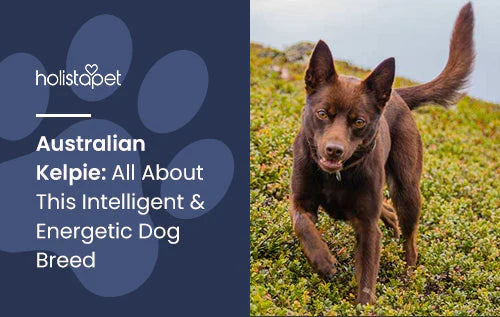
 CBD Oil for Dogs - Fast Acting
CBD Oil for Dogs - Fast Acting
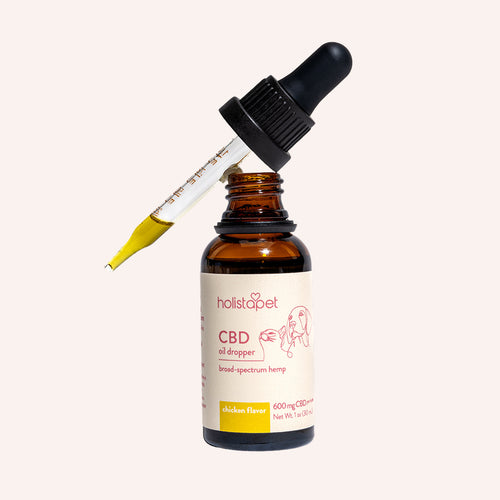 Chicken Flavored CBD Oil For Dogs - Easy Dose
Chicken Flavored CBD Oil For Dogs - Easy Dose
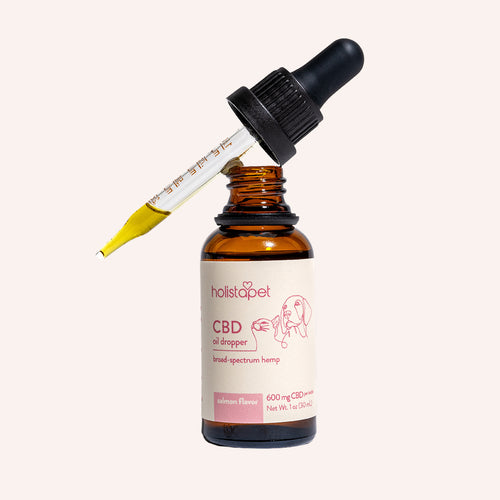 Salmon Flavored CBD Oil For Dogs - Highly Rated
Salmon Flavored CBD Oil For Dogs - Highly Rated
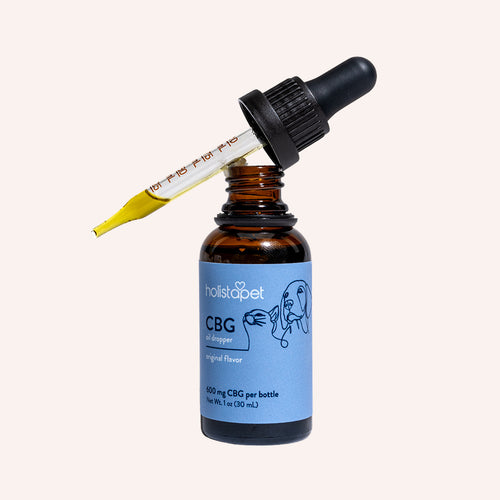 CBG Oil for Dogs and Cats - Loved by Thousands
CBG Oil for Dogs and Cats - Loved by Thousands


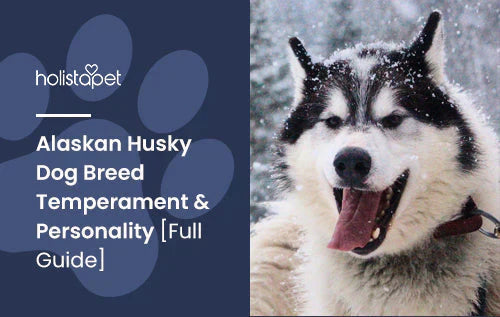
![Manchester Terrier Dog Breed Temperament & Personality [Full Guide]](http://www.holistapet.com/cdn/shop/articles/Manchester_Terrier_Dog_Breed_Guide_482ca491-5803-4a7e-b8d4-910321cf9a7d.webp?v=1745578507&width=500)

Leave a comment
All comments are moderated before being published.
This site is protected by hCaptcha and the hCaptcha Privacy Policy and Terms of Service apply.